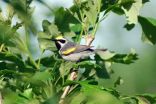Resistance to anti-viral drug may be more likely in cystic fibrosis patients
After lung transplantation, CF patients require close monitoring for resistance to ganciclovir
2014-12-18
(Press-News.org) MAYWOOD, Ill. - A drug called ganciclovir is given to lung transplant patients to protect against a life-threatening virus that is common after transplantation.
Ganciclovir reduces mortality due to the virus from 34 percent to between 3 and 6 percent. But between 5 percent and 10 percent of patients infected with the virus have strains that are resistant to the drug.
A Loyola University Medical Center study found that such resistance may occur more frequently in cystic fibrosis patients. These patients were found to have insufficient levels of the drug in their bloodstream, enabling the virus to continually replicate. This in turn may increase the chance that mutations will occur and result in drug resistance.
The study suggests that cystic fibrosis patients should be monitored to ensure there are therapeutic levels of ganciclovir in their bodies, said James Gagermeier, MD, first author of the study. The study is published online ahead of print in the journal Transplant Infectious Disease.
Lung transplant patients take immune-suppressing drugs to prevent rejection of their new lungs. But suppressing the immune system makes the patient more vulnerable to a virus called cytomegalovirus (CMV).
Gagermeier and colleagues reviewed records of 51 Loyola lung transplant patients. Twenty-one patients had CMV infection. Ten of these infected patients responded well to ganciclovir, meaning the virus was eliminated and symptoms improved within 14 days. Of the remaining 11 patients, 6 patients with sufficient levels of ganciclovir experienced a delayed (longer than 14 days) but appropriate response to the drug. Five patients with insufficient levels of ganciclovir did not respond to the drug; all five of these patients had drug-resistant strains of the CMV virus.
Four of the five patients who did not respond to ganciclovir (80 percent) had cystic fibrosis. By contrast, only 2 of the 16 patients who responded to the drug (12.5 percent) had cystic fibrosis.
Cystic fibrosis patients lack pancreatic enzymes that facilitate the absorption of food and medicines. They also clear drugs out of the body more quickly, Dr. Gagermeier said.
Results of the study suggest that cystic fibrosis patients who have had lung transplants should be closely monitored to ensure they have adequate levels of ganciclovir in their blood stream, Dr. Gagermeier said.
The study has limitations. It is a retrospective study with a small sample size, and patient compliance with the antiviral medications was not systematically evaluated. Thus it's possible that poor compliance may have contributed to infection with CMV and/or resistance to ganciclovir. Importantly, genetic analysis was not performed on all patients with CMV infection, and therefore cases of ganciclovir resistance may not have been detected.
INFORMATION:
The study is titled "Subtherapeutic ganciclovir (GCV) levels and GCV-resistant cytomegalovirus in lung transplant recipients."
Dr. Gagermeier is medical director of pulmonary medicine and an associate professor in the Division of Pulmonary and Critical Care Medicine of Loyola University Chicago Stritch School of Medicine. Co-authors are Joshua Rusinak, PharmD, Nell Lurain, PhD, Charles Alex, MD, Daniel Dilling, MD, Christopher Wigfield, MD and Robert Love, MD.
ELSE PRESS RELEASES FROM THIS DATE:
2014-12-18
A group of researchers from the University of Barcelona (Spain), the CNRS in Montpellier (France) and Princeton University (USA) report in The American Naturalist that the vaccination of females of a long-lived seabird species, the Cory's shearwater, results in levels of antibodies that allow their transmission to their offspring for several years and could provide several weeks of protection after hatching to these offspring.
Over a period of 6 years, in the Canary Archipelago (Spain), the researchers tracked the immune status of a large number of adults and chicks, ...
2014-12-18
VIDEO:
Using data from NASA/USGS satellite Landsat 8, scientists have measured how vegetation in the Colorado River Delta has responded to the pulse of water released in March 2014 as part...
Click here for more information.
A pulse of water released down the lower reaches of the Colorado River last spring resulted in more than a 40 percent increase in green vegetation where the water flowed, as seen by the Landsat 8 satellite. The March 2014 release of water - an experimental ...
2014-12-18
Hydrogen fuel is a promising source of clean energy that can be produced by splitting water into hydrogen and oxygen gas. The reaction is difficult but achievable with the help of a catalyst, a material that can speed up the process. However, current catalysts lack the efficiency required for water splitting to be commercially competitive. Recently scientists have identified one such catalyst, iron-doped nickel oxide, as a highly active compound that can speed up this reaction, but the origin of its activity is not well understood.
Now researchers at Princeton University ...
2014-12-18
The United States is a melting pot of different racial and ethnic groups, but it has not been clear how the genetic ancestry of these populations varies across different geographic regions. In a landmark study published by Cell Press December 18th in the American Journal of Human Genetics, researchers analyzed the genomes of more than 160,000 African Americans, Latinos, and European Americans, providing novel insights into the subtle differences in genetic ancestry across the United States.
"Our study not only reveals the historical underpinnings of regional differences ...
2014-12-18
It's no secret that people are judgmental, and young children are no exception. When children witness "good" or "bad" behavior, their brains show an immediate emotional response. But, according to a study appearing in the Cell Press journal Current Biology on December 18, it takes more than that kind of automatic moral evaluation for kids to act with generosity and share their stickers.
By recording kids' brain activity, the study found that generous behavior requires a controlled thought process. The neurodevelopmental findings are the first to link implicit moral evaluations ...
2014-12-18
Golden-winged warblers apparently knew in advance that a storm that would spawn 84 confirmed tornadoes and kill at least 35 people last spring was coming, according to a report in the Cell Press journal Current Biology on December 18. The birds left the scene well before devastating supercell storms blew in.
The discovery was made quite by accident while researchers were testing whether the warblers, which weigh "less than two nickels," could carry geolocators on their backs. It turns out they can, and much more. With a big storm brewing, the birds took off from their ...
2014-12-18
Many recent studies showed that calorie restrictions reduce the incidence of cancer, whereas high-calorie diets cause obesity and diabetes, both of which increase the risk of developing cancers. However, tumor biology still hides complex mechanisms, as revealed by researchers from the Faculty of Medicine of the University of Geneva (UNIGE), Switzerland. In a study published in Cell Metabolism, scientists not only found the unexpected benefit that a change of diet had on certain types of lung cancer, they also deciphered the molecular mechanism underlying this dietary effect ...
2014-12-18
Berkeley -- When birds unexpectedly flee their nesting grounds, it may be a demonstration of Mother Nature's early-warning system that a massive storm is approaching.
While tracking a population of golden-winged warblers, a research team led by ecologist Henry Streby at the University of California, Berkeley, discovered that birds in the mountains of eastern Tennessee fled their breeding grounds one to two days ahead of the arrival of powerful supercell storms. The storm system swept through the central and southern United States in late April 2014, generating 84 confirmed ...
2014-12-18
This news release is available in Japanese. Behind all motor, sensory and memory functions, calcium ions are in the brain, making those functions possible. Yet neuroscientists do not entirely understand how fast calcium ions reach their targets inside neurons, and how that timing changes neural signaling. Researchers at the Okinawa Institute of Science and Technology Graduate University have determined how the distance from calcium channels to calcium sensors on vesicles affects a neuron's signaling precision and efficacy. In international collaboration with research ...
2014-12-18
Climate change impacts will require major but very uncertain transformations of global agriculture systems by mid-century, according to new research from the International Institute for Applied Systems Analysis.
Climate change will require major transformations in agricultural systems, including increased irrigation and moving production from one region to another, according to the new study, published in the journal Environmental Research Letters. However without careful planning for uncertain climate impacts, the chances of getting adaptation wrong are high, the study ...
LAST 30 PRESS RELEASES:
[Press-News.org] Resistance to anti-viral drug may be more likely in cystic fibrosis patients
After lung transplantation, CF patients require close monitoring for resistance to ganciclovir






